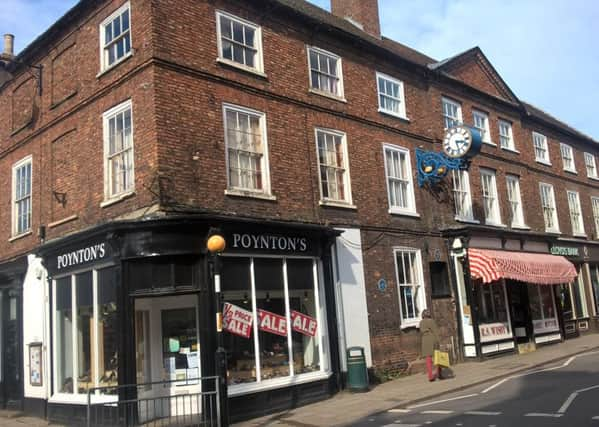Historic town building is on the market


Sir Joseph (1741-1820) was a world respected botanist, explorer and naturalist and is recognised as one of the most famous residents in Horncastle’s history.
A long-time president of the Royal Society, he made a name for himself by accompanying Captain James Cook on his voyages to the South Seas in the 1700s making a number of exciting discoveries.
Advertisement
Advertisement
David Robinson’s book on Sir Joseph relates that: “Tradition has it that in 1775 Joseph commissioned a town house built in the High Street in Horncastle (the date is on the drain heads).
“It was next to the Sessions House and would have required demolishing existing mud and stud properties.”
The family home was at Revesby but it is widely thought Sir Joseph spent time at the town house as he worked on a number of projects in the area.
It is now Grade II Listed and is a nine-bay, two-and-a-half storey structure in red brick in Flemish bond on the front and in English garden bond sides and back,
Advertisement
Advertisement
Among the many features are sections of pantile roof and Georgian style sash windows.
The first floor windows have folding wooden shutters and blocked doorways to the western property. The west end also has a cellar formerly lit from the street.
The Horncastle Drum Clock (1860) is on the wall between the third and fourth windows on the first floor with the winding mechanism inside.
Today the ground floor, including the west end, has shop windows - Poyntons (shoes), Wisby (butcher) and Lloyds Bank.
Advertisement
Advertisement
Alterations to the latter spoil the conformity of the building, allowed in the late 1960s.
The interior staircase behind Wisbys appears to be the original.
William Crowder (now Lloyds Bank) occupied that part of the building from 1841 to the late 1960s.
The shop now taken up by Poyntons was occupied by William Bryant (now Poyntons) from 1892 and before then by Jeremiah Gilbert (grocer), Elmitt & Co (grocers) and William Trotter (dentist).
Advertisement
Advertisement
Wisbys were occupied by Moody & Co (woollen & fancy repository) and Mrs Ellen Smetham (fancy repository), John S Balding (butcher) and from 1922 by Harry English (pork butcher).
It is thought that the building was divided into three with proprietors living above the shop, after Sir Joseph died in 1820.
The whole of the ground floor, except for one window, was replaced by shop fronts, with corner entrances to what is now Poyntons and Lloyds Bank (formerly Crowders, a well known local family of nurserymen, seedsmen, florist and greengrocer).
Only the centre section, plus one bay of Poyntons, remains a private residence.
Advertisement
Advertisement
•Robert Bell and Company are currently selling the west end (Poyntons) and the freehold of the east end (Lloyds) - subject to an existing rental.
Full details and particulars - including prices - are available in the Commercial Section on Bell’s website. www.robert-bell.org/commercial